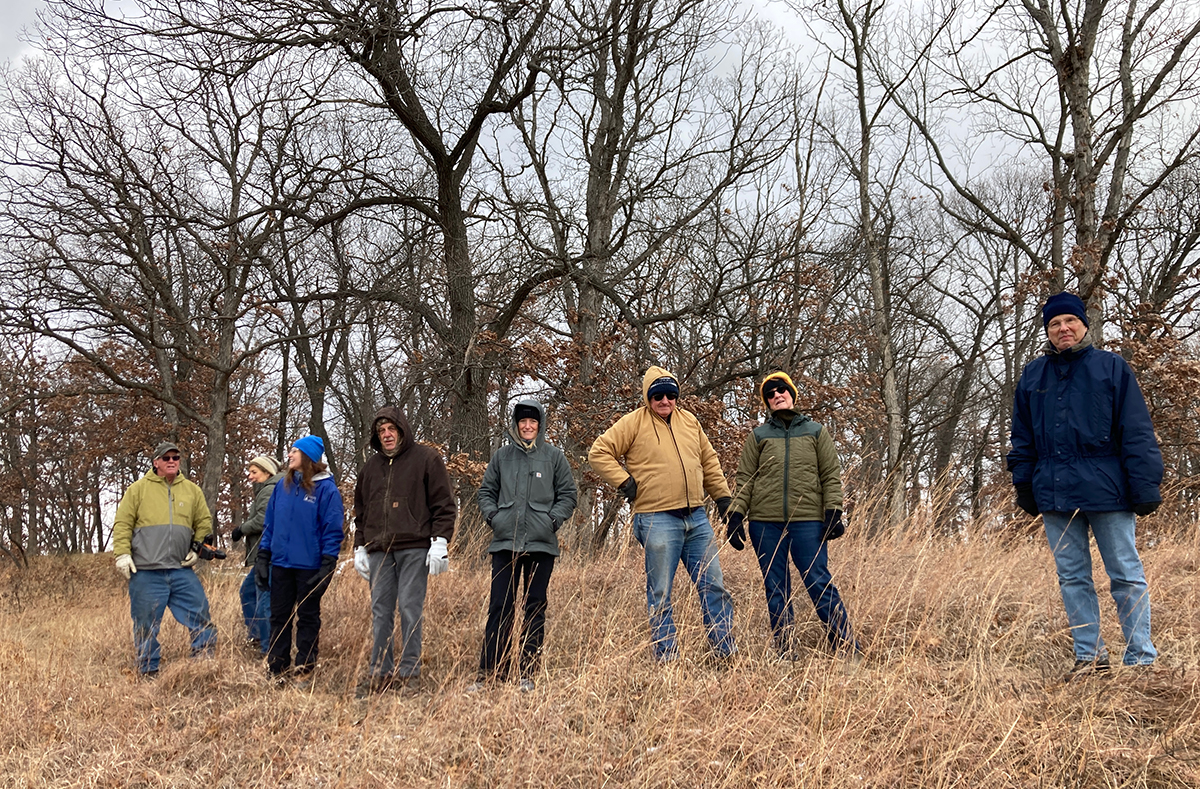The first time I can remember being exposed to the Illinois prairie was more than 40 years ago on a hike led by Hal Gardner at Jubilee College State Park. It was part of a “Prairie Day” event to build community awareness about our local prairie habitats. We took a walk through a remnant prairie and learned what volunteers were doing to restore prairie habitats that had suffered long years of abuse by human activities such as plowing and over-grazing.
The Peoria region has a long history of people leading the charge for prairie restoration. Irene Cull was a botanist at the USDA Lab in Peoria and is credited for spearheading the planting one of the nation’s first “Roadside Prairies” along Interstate-74 in the mid-1960s. Undoubtedly she had an influence on Hal, who was a young biochemist at the same lab. Over the years, others came to understand the beauty and importance of prairie. Several groups sprouted up during the early 1990s comprised of volunteers who developed and honed the techniques of caring for prairie remnants and restoring prairie plants to areas where they had been destroyed.

Photo by Mike Miller. Prairie Dawg volunteer stewards at Robinson Park Hill Prairie Nature Preserve, Peoria County.
One such group was started by Hal Gardner and known as the Jubilee Prairie Dawgs. They started their work in the prairie remnants at Jubilee Park and expanded into restoring prairie plants to areas that were recently taken out of row crops. From Jubilee, they branched out to doing ecological stewardship work on other prairie remnants outside of Jubilee. Hal moved back to his family roots in Pennsylvania and, sadly, died in November of 2019. The Prairie Dawgs are still very active today and are carrying on the legacy of their founder and mentor. Their efforts include removing exotic and invasive species, assisting with prescribed burns, and propagating native plants for new restoration projects.
On a cold and windy November morning, I had the privilege of leading the Prairie Dawgs on a tour of Robinson Park Hill Prairie Nature Preserve. Prairies benefit from the cross pollination and distribution of plants from one prairie to another. The same is true of humans that frequent prairies. It is good to explore new places, to see what exists in nature beyond familiar earth. The Prairie Dawgs had an opportunity to experience a new prairie that day, and the prairie now has new people who are advocates for it. It is a two-way exchange that is beneficial for both. As we all walked on the windswept ridge of hill prairie in the cold, we all experienced an affirmation of why we were here. The wind danced among the prairie grass and carried upon it an ancient sound. The calls of more than a half-dozen Sandhill Cranes came from the cloudy skies. They flew directly overhead, looking down upon a landscape that has existed in this place for as long as their species has frequented the skies. What did they think of the people who looked up at them?
We were also joined by Amy Doll, the Executive Director for the Friends of Illinois Nature Preserves, a private not-for-profit that assists the Illinois Nature Preserves Commission with the care and advocacy of the state’s 600-plus Dedicated Nature Preserves. One of the goals of her organization is to assist in the development of “volunteer stewardship” programs where people can assist with the care of our Nature Preserves. The Prairie Dawgs are a great model of how a volunteer stewardship group can work. If each of our local Nature Preserves had their own group of “Dawgs,” it would help both the preserve, and those people who build a strong bond to the land.
Over the next year, there will be an effort to increase the opportunities for the public to be involved with volunteer stewardship of our local region’s Nature Preserves. I think Hal would be proud of what has become of his Prairie Dawgs. Not only are they protecting the prairies that were beloved by him, they have also created the roadmap of how this can be done throughout the state. Our Illinois Nature Preserves are the best examples we have left of our native habitats. They need our care and attention if they are going to survive. You can keep up to date on these volunteer stewardship opportunities, and find out more about our Illinois Nature Preserves, by visiting the Friends of Illinois Nature Preserves at: https://friendsofillinoisnaturepreserves.org


3 comments for “Nature Rambles: Our prairies need more Dawgs to look after them”